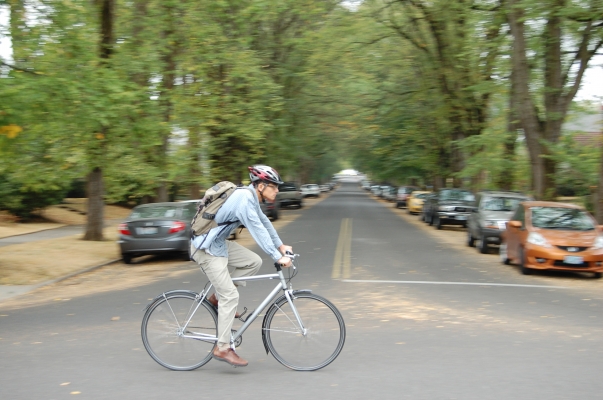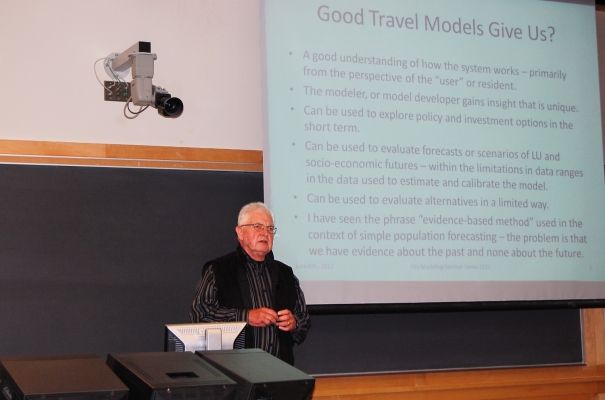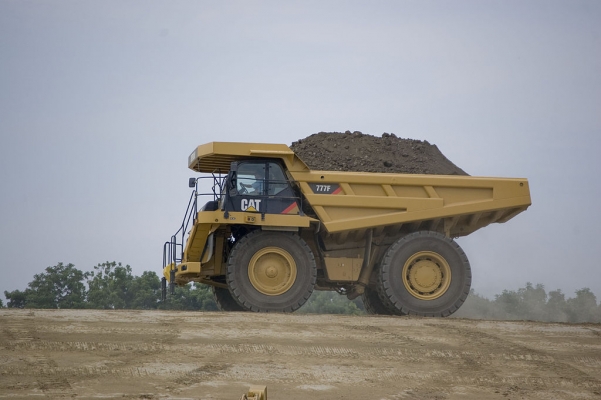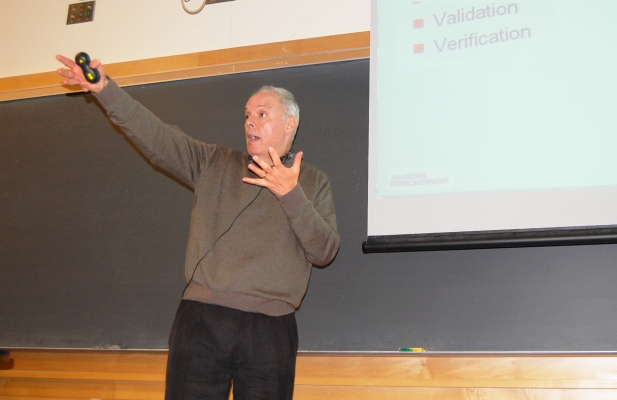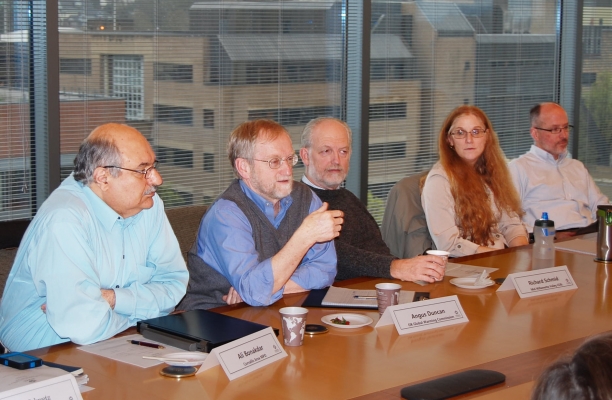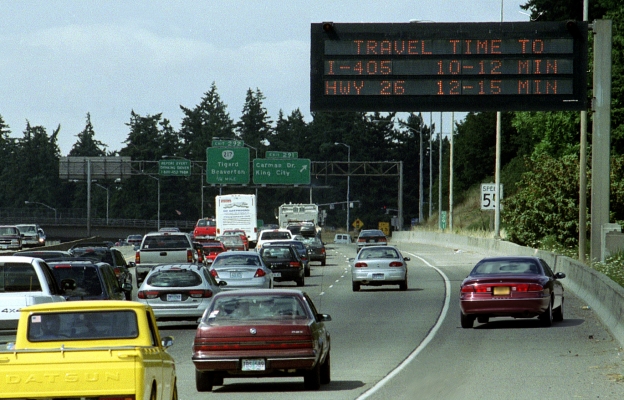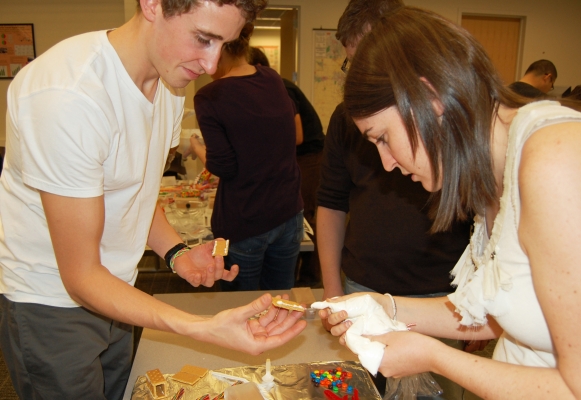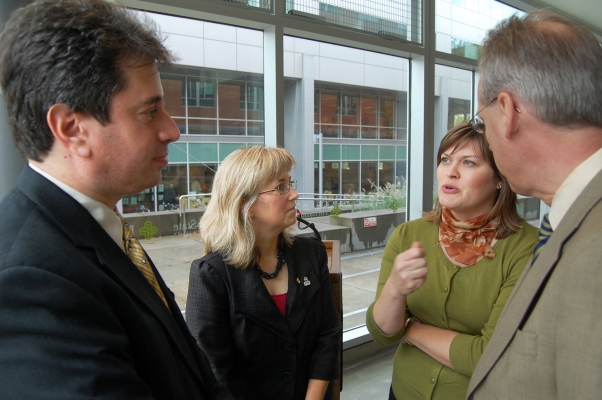When policymakers look to meet cycling goals by investing in new bicycle routes, they have little research to help them determine whether cyclists will actually use them. As a result, bicycle facilities aren’t considered equally with motor vehicle infrastructure.
That’s changing, thanks in part to OTREC research. An OTREC-funded study, the first to gather large-scale data that reveal cyclists’ actual route preference, is being published in a scientific journal (Transportation Research Part A). The findings have already been incorporated into the regional travel demand model used to make transportation investment decisions across the Portland region.
In the study, Portland State University researchers Joseph Broach, Jennifer Dill and John Gliebe (Gliebe is now with RSG Inc.) outfitted cyclists with GPS units to record which routes they chose and model the choices to reveal preferences. Previous studies have relied on stated preference surveys or less reliable methods of determining cyclists’ actual routes. The data gathering was supported by a grant from the Robert Wood Johnson Foundation through its national...
Read more
